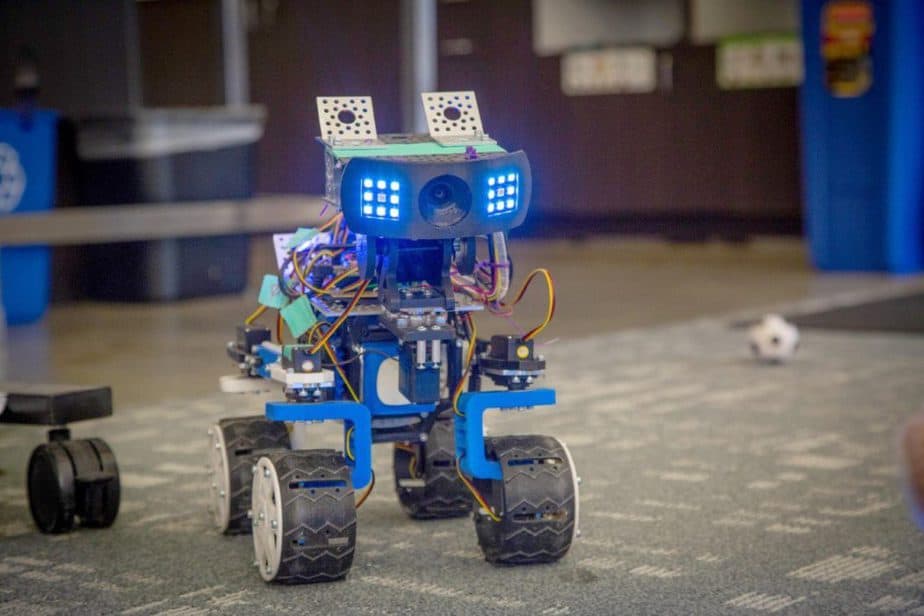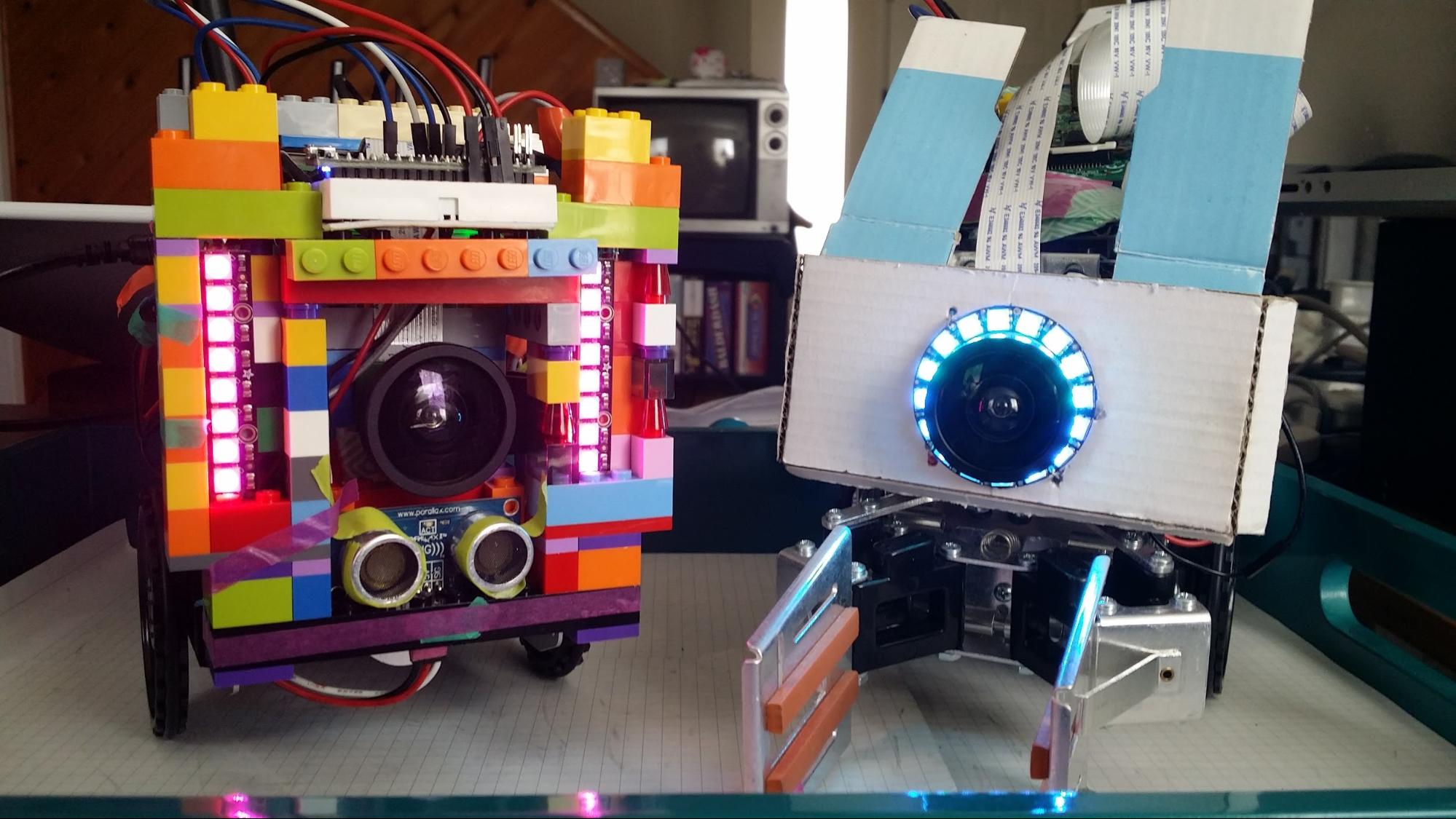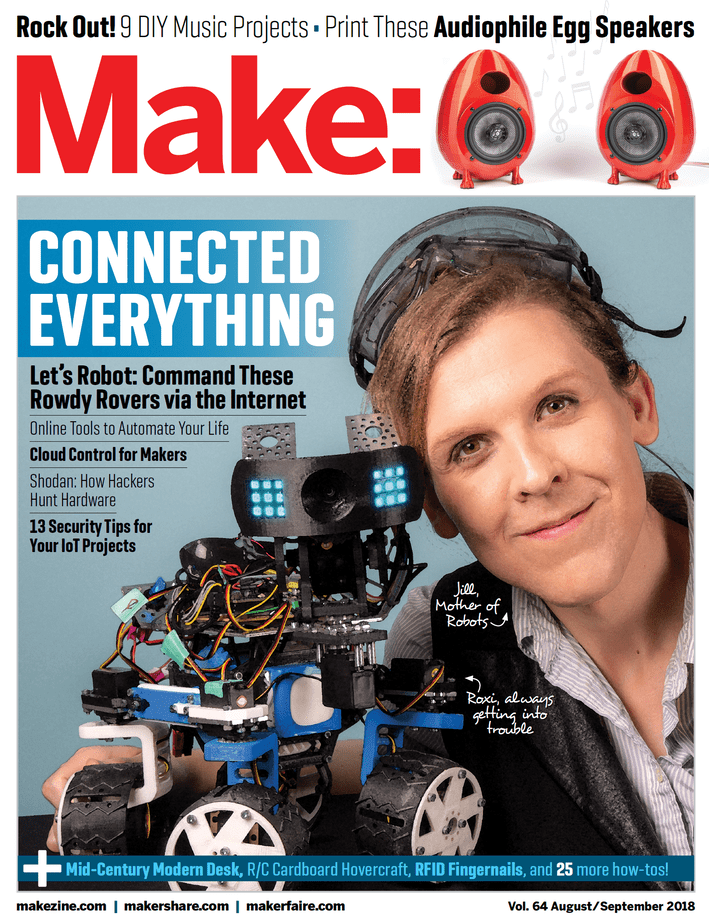
Recently featured on the cover of MAKE magazine, Jillian Ogle is a robot builder, game designer and the founder of Let’s Robot a live streaming interactive robotics community, where users can control real robots via chatroom commands, or put their on own robots online. Some users can even make money with their robots on the Let’s Robot platform which allows viewers to make micropayments to access some robots. All you need is a robot doing something that’s interesting to someone else, whether it’s visiting new locations or letting the internet shoot ping pong balls at you while you work!
As the first ‘Roboticist in Residence’ at Co-Lab in Oakland, Ogle has access to the all the equipment and 32,000 sq ft of space, providing her robotics community with a super large robot playground for her live broadcasts. And the company of fellow robot geeks. Co-Lab is the new coworking space at Circuit Launch supported by Silicon Valley Robotics, and provides mentors, advisors and community events, as well as electronics and robotics prototyping equipment.
You can meet Ogle at the next Silicon Valley Robotics speaker salon “The Future of Robotics is FUN” on Sept 4 2018. She’ll be joined by Circuit Launch COO Dan O’Mara and Mike Winter, Battlebot World Champion and founder of new competition ‘AI or Die’. Small and cheap phone powered robots are becoming incredibly intelligent and Ogle and Winter are at the forefront of pushing the envelope.
Ogle sees Let’s Robot as the start of a new type of entertainment, where the relationship between viewers and content are two-way and interactive. Particularly because robots can go places that some of us can’t, like the Oscars. Ogle has ironed out a lot of the problems with telepresence robotics including faster response time for two way commands. Plus it’s more entertaining than old school telepresence with robots able to take a range of actions in the real world.
While the majority of robots are still small and toylike, Ogle believes that this is just the beginning of the way we’ll interact with robots in the future. Interaction is Ogle’s strength, she started her career as an interactive and game designer, previously working at companies like Disney and was also a participant in Intel’s Software Innovators program.
“I started all this by building dungeons out of cardboard and foam in my living room. My background was in game design, so I’m like, ‘Let’s make it a game.’ There’s definitely a narrative angle you could push; there’s also the real-world exploration angle. But I started to realize it’s a little bigger than that, right? With this project, you can give people access to things they couldn’t access by themselves.” said Jillian talking to Motherboard.

Here are the instructions from Makezine for connecting your own robot to Let’s Robot. The robot side software is open source, and runs on most Linux-based computers. There is even an API that allows you to fully customize the experience. If you’re building your own, start here.
Most of the homebrew robots on Let’s Robot use the following components:
- Raspberry Pi or other single-board computer. The newest Raspberry Pi has onboard Wi-Fi, you just need to point it at your access point.
- SD card with Raspbian or NOOBS installed. You can follow our guide to get our software to run on your robot, and pair it with the site: letsrobot.tv/setup.
- Microcontroller, such as Arduino. The Adafruit motor hat is also popular.
- Camera to see
- Microphone to hear
- Speaker to let the robot talk
- Body to hold all the parts
- Motors and servos to move and drive around
- LEDs and sensors to make things interesting
- And a battery to power it all
A lot of devices and robots are already supported by Let’s Robot software, including the GoPiGo Robot, and Anki Cozmo. If you have an awesome robot just sitting on the shelf collecting some dust, this could be a great way to share it with everyone! There’s also a development kit called “Telly Bot” which works out of the box with the letsrobot.tv site. See you online!


